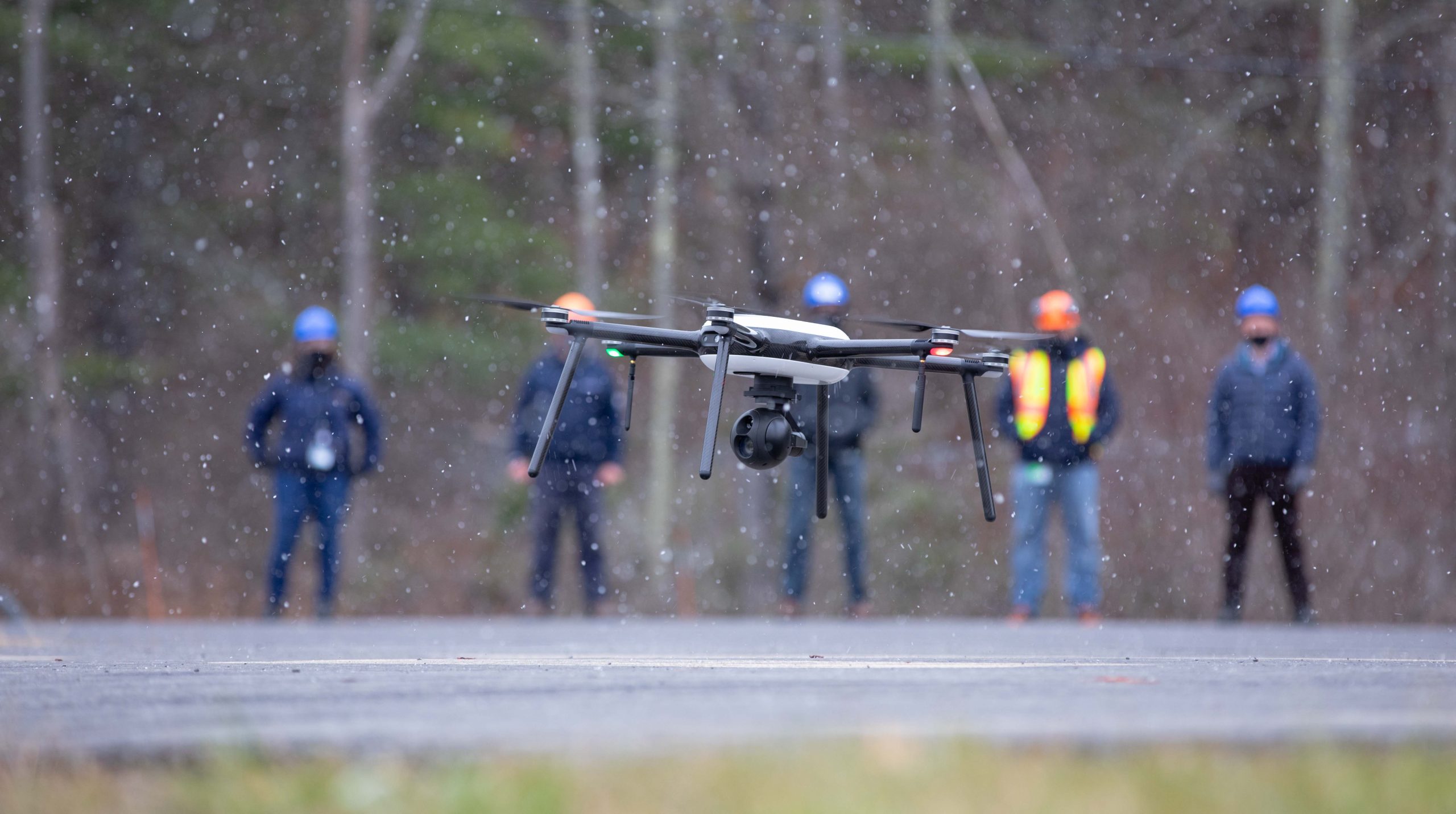Electric utilities enter the dawning age of 5G wireless technology

The New York Power Authority (NYPA), the largest state-owned electric utility in America, earlier this month successfully collaborated with wireless providers to deploy drones equipped with imaging devices to inspect its transmission lines using what’s known as a private LTE wireless network.
Such test flights are aimed at helping NYPA, and other power companies like investor-owned utilities (IOUs), to safely inspect many miles of transmission lines with drones using wireless networks that can convey images and data, said experts during the Dec. 4 press briefing on the impact of 5G networks on electric utilities held by the United States Energy Association (USEA).
In fact, electric utilities are heavily dependent on sensors and growing interconnectivity for things like smart meters, dispersed generation, and variable generation like wind and solar, all of which require real-time data streams to make split-second adjustments on the grid, said USEA Acting Executive Director Sheila Hollis.
Likewise, during natural disasters such as wildfires, snowstorms and hurricanes, for instance, utilities need uninterruptible communications to maintain operations, she added.
Enter: wireless technologies, like LTE and 5G, which can help utilities build communications systems that won’t fail even if the internet does, or if there’s a cyberattack, natural disaster or other major catastrophe.
Right now, a rising number of electric companies depend on the licensed private wireless radio networks operated by cellular phone companies to perform numerous mission-critical tasks for them, including carrying data to operate energy infrastructure; promoting situational awareness by collecting data from smart sensors and smart meters; and enabling communications between electric company personnel in the field during natural disasters and other emergencies, according to the Edison Electric Institute (EEI), which represents all of the nation’s IOUs.
Duke Energy Corp., a Charlotte, N.C.-based IOU, for example, is leading an effort to improve how utilities and wireless companies deploy digital solutions in a faster, cost-effective and more aesthetically pleasing ways that benefit communities by locating hundreds of 5G small cell technology boxes on street lights in several cities.
And as telecommunication technologies like 5G cellular communications and small cell networks are created and deployed, EEI says that public policies should encourage collaboration between the electric power industry and the communications industry.
Public policies, though, will have to catch up with the utility and telecom collaborations happening now.
For instance, the NYPA test flights held earlier this month were part of a November pilot program that began when NYPA awarded a contract to Nokia to pilot private LTE wireless technology. NYPA is using the Nokia Digital Automation Cloud platform to help build a secure, robust and reliable network to improve operations and programmatic benefits.
“The ultimate goal of this project is to leverage all the benefits of the ever-evolving innovation in wireless technology, and this is an exciting first step,” said Gil Quiniones, NYPA president and CEO. “The pilot program to install private LTE wireless technology across our generation and transmission network is integral to NYPA’s transition to becoming an end-to-end digital utility, so it is extremely gratifying to see the progress of this drone test.”
NYPA’s drone inspection — which took place at its Blenheim-Gilboa Pumped Storage Power Project in Schoharie County, N.Y. — also showed that high-definition video and thermal imaging remote live stream technologies embedded in the drones could enable unmanned, detailed inspections even being close to in-service transmission lines. Such drone use is one among many applications NYPA intends to test, Quinones said during the USEA event.
He detailed how the utility is collaborating with Nokia and other companies like Anterix Inc., the nation’s largest holder of 900 MHz spectrum licenses in the United States, to pilot the private LTE network at NYPA’s Blenheim-Gilboa facility, a hydroelectric plant where it is also wirelessly connecting NYPA work crews and predicting and avoiding power and distribution failures.
Morgan O’Brien, executive chairman of Anterix, pointed out that a utility’s ability to create private LTE networks also should resolve any cybersecurity issues it may have about using 4G and 5G technologies.
“A private LTE system can be designed from the ground-up for the needs of a particular industry so it can be more secure,” O’Brien explained during the press briefing. “It’s not like the public internet.”
Currently, Anterix is in discussions with some 40 other utilities that it hopes will sign private LTE network leases, which could span up to 40 years and cover 4G, 5G, and the inevitable 6G.
Anterix can offer the utility industry “the ability to use this spectrum to have wireless as their last critical link to connect devices,” said O’Brien. “It offers a path from 4G to 5G and could be an enabling opportunity for the industry far into the future.”
Additionally, 5G can allow utilities to safely put their intelligence in the cloud and help them face myriad challenges, such as how they might manage their capacities and operate their grids, and at what costs, said Andres Carvallo, CEO and founder of CMG Consulting LLG, during the USEA event.
And electric utilities may find 5G technologies so useful that they may want to acquire “spectrum in order to have the option to construct their own private 5G networks,” according to a March 2019 report released by the Utilities Technology Council (UTC) entitled, “Cutting Through the Hype: 5G and Its Potential Impacts on Electric Utilities.”
Acquiring such spectrum would give utilities redundant telecommunications provision; provide coverage in areas lacking service, such as rural areas; allow them to continue operations when public networks suffer blackouts; and offer greater security than commercial networks, according to the UTC report.
